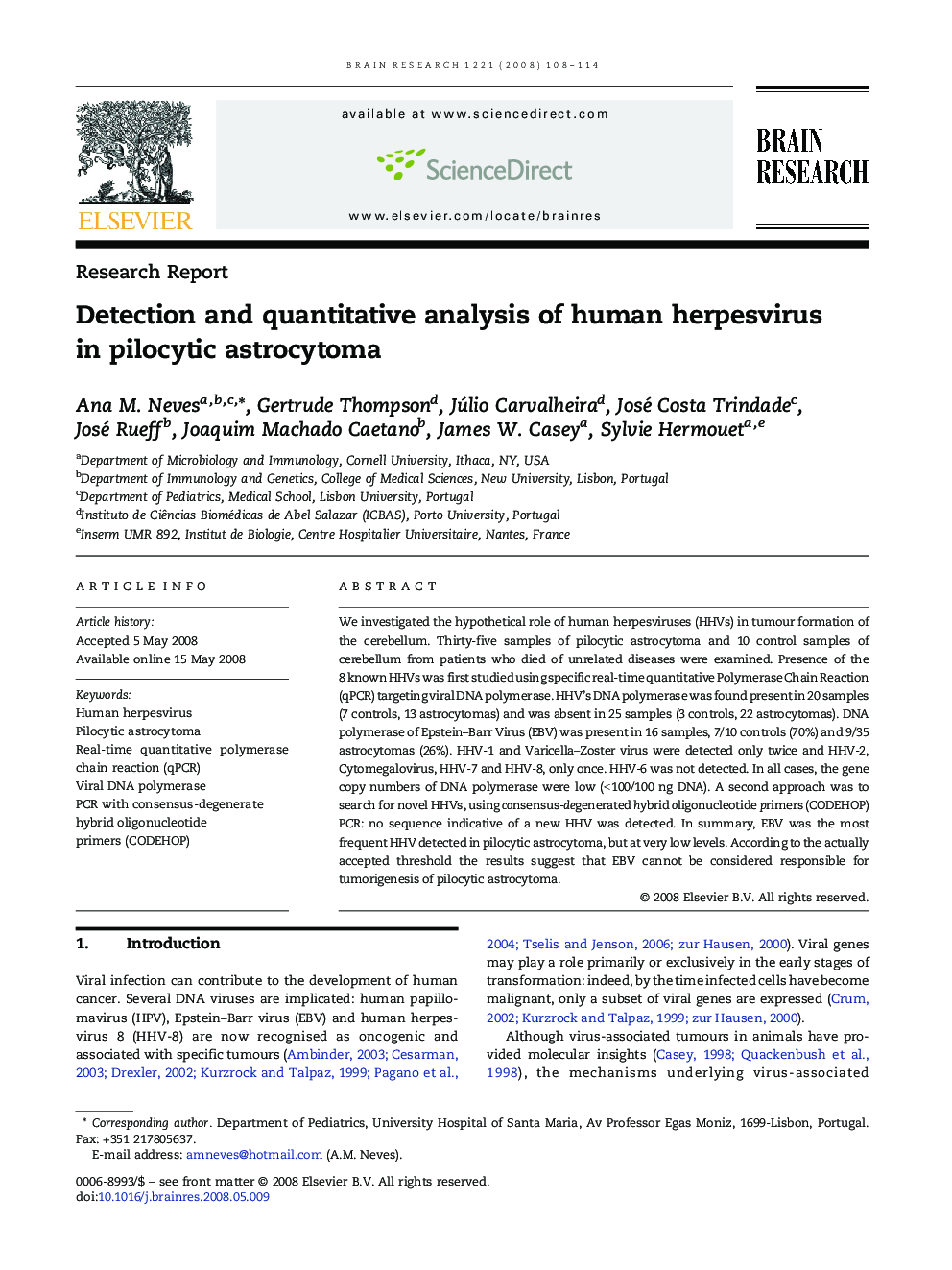| Article ID | Journal | Published Year | Pages | File Type |
|---|---|---|---|---|
| 4329504 | Brain Research | 2008 | 7 Pages |
Abstract
We investigated the hypothetical role of human herpesviruses (HHVs) in tumour formation of the cerebellum. Thirty-five samples of pilocytic astrocytoma and 10 control samples of cerebellum from patients who died of unrelated diseases were examined. Presence of the 8 known HHVs was first studied using specific real-time quantitative Polymerase Chain Reaction (qPCR) targeting viral DNA polymerase. HHV's DNA polymerase was found present in 20 samples (7 controls, 13 astrocytomas) and was absent in 25 samples (3 controls, 22 astrocytomas). DNA polymerase of Epstein-Barr Virus (EBV) was present in 16 samples, 7/10 controls (70%) and 9/35 astrocytomas (26%). HHV-1 and Varicella-Zoster virus were detected only twice and HHV-2, Cytomegalovirus, HHV-7 and HHV-8, only once. HHV-6 was not detected. In all cases, the gene copy numbers of DNA polymerase were low (<Â 100/100Â ng DNA). A second approach was to search for novel HHVs, using consensus-degenerated hybrid oligonucleotide primers (CODEHOP) PCR: no sequence indicative of a new HHV was detected. In summary, EBV was the most frequent HHV detected in pilocytic astrocytoma, but at very low levels. According to the actually accepted threshold the results suggest that EBV cannot be considered responsible for tumorigenesis of pilocytic astrocytoma.
Related Topics
Life Sciences
Neuroscience
Neuroscience (General)
Authors
Ana M. Neves, Gertrude Thompson, Júlio Carvalheira, José Costa Trindade, José Rueff, Joaquim Machado Caetano, James W. Casey, Sylvie Hermouet,
